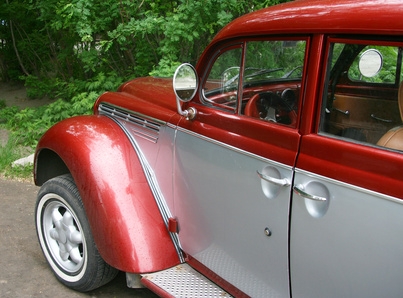
Primers and sealers figure prominently in the auto body repair and detailing industry. Different types of primers are available to meet specific needs of the auto body technician. Knowing the uses and properties of primers and sealers will help ensure the application of the correct product for the best aesthetic result. Sealers also have more than one use; for best results, take the time to understand the sealer's application properties before application.
Apply etch primers, which assist with adhesion and protect the metal against corrosion, and then cover them with another type of primer before applying the top coat of paint. Many etch primer products are semitransparent, making them unlikely to affect the final appearance of the paint color. Apply etch primers quickly as a thin film on the car; this application alleviates the need for sanding after application.
Urethane primers, commonly used to create a smooth surface to the car before the application of the top coat, adhere well to body filler. The primer is designed for application in thin coats and will result in a smooth finish, which helps reduce the amount of sanding required prior to painting with the top coat. The urethane primer has solids mixed into it, which help fill and smooth minor body defects.
Sealers, commonly used by auto body repair shops to help provide an even color appearance in the paint job, also help hide the affects of poor preparation for the painting process. In extreme cases of neglect, however, the sealer will instead bring attention to the problem areas. Sealers create a barrier between the top coat and the primers underneath --- an advantage if the top coat contains solvents that could potentially weaken the adhesion of the primers below.